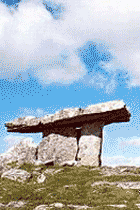
Italy - Economy
Italy - Economy
Economy - overview: Italy has a diversified industrial economy with roughly the same total and per capita output as France and the UK. This capitalistic economy remains divided into a developed industrial north, dominated by private companies, and a less developed agricultural south, with more than 20% unemployment. Most raw materials needed by industry and more than 75% of energy requirements are imported. Since 1992, Italy has adopted budgets compliant with the requirements of the European Monetary Union (EMU); wage moderation agreements by representatives of government, labor, and employers have helped to bring Italy's inflation into conformity with EMU requirements. Italy's economic performance, however, has lagged behind that of its EU partners and it must work to stimulate employment, promote labor flexibility, reform its expensive pension system, and tackle the informal economy.
GDP: purchasing power parity - $1.273 trillion (2000 est.)
GDP - real growth rate: 2.7% (2000 est.)
GDP - per capita: purchasing power parity - $22,100 (2000 est.)
GDP - composition by sector: agriculture: 2.5% - industry: 30.4% - services: 67.1% (2000 est.)
Population below poverty line: NA%
Household income or consumption by percentage share: lowest 10%: 3.5% - highest 10%: 21.8% (1995)
Inflation rate (consumer prices): 2.5% (2000)
Labor force: 23.4 million (2000)
Labor force - by occupation: services 61.9%, industry 32.6%, agriculture 5.5% (1999)
Unemployment rate: 10.4% (2000 est.)
Budget: revenues: $488 billion - expenditures: $501 billion, including capital expenditures of $NA (2000 est.)
Industries: tourism, machinery, iron and steel, chemicals, food processing, textiles, motor vehicles, clothing, footwear, ceramics
Industrial production growth rate: 1.9% (2000)
Electricity - production: 247.679 billion kWh (1999)
Electricity - production by source: fossil fuel: 79.09% - hydro: 18.08% - nuclear: 0% - other: 2.83% (1999)
Electricity - consumption: 272.35 billion kWh (1999)
Electricity - exports: 530 million kWh (1999)
Electricity - imports: 42.539 billion kWh (1999)
Agriculture - products: fruits, vegetables, grapes, potatoes, sugar beets, soybeans, grain, olives; beef, dairy products; fish
Exports: $241.1 billion (f.o.b., 2000)
Exports - commodities: engineering products, textiles and clothing, production machinery, motor vehicles, transport equipment, chemicals; food, beverages and tobacco; minerals and nonferrous metals
Exports - partners: EU 56.8% (Germany 16.4%, France 12.9%, Netherlands 7.1%, Spain 6.3%, Netherlands 2.9%), US 9.5% (1999)
Imports: $231.4 billion (f.o.b., 2000)
Imports - commodities: engineering products, chemicals, transport equipment, energy products, minerals and nonferrous metals, textiles and clothing; food, beverages and tobacco
Imports - partners: EU 61% (Germany 19.3%, France 12.6%, Netherlands 6.3%, Spain 4.4%), US 5.0% (1999)
Debt - external: $NA
Economic aid - donor: ODA, $1.3 billion (1997)
Currency: Italian lira (ITL); euro (EUR) - note: on 1 January 1999, the EU introduced the euro as a common currency that is now being used by financial institutions in Italy at a fixed rate of 1,936.27 Italian lire per euro and will replace the local currency for all transactions in 2002
Currency code: ITL; EUR
Exchange rates: euros per US dollar - 1.0659 (January 2001), 1.0854 (2000), 0.9386 (1999); Italian lire per US dollar - 1,688.7 (January 1999), 1,736.2 (1998), 1,703.1 (1997), 1,542.9 (1996)
Fiscal year: calendar year
